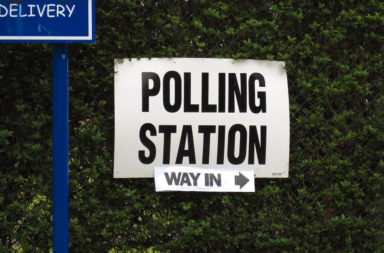Steve Bannon and his dark all-right fraction in the White House won against the moderates from New York, sitting in first row with a big smile:
- Radical, ignorant, aggressive and crazy again, his simple-minded GOP voters applaud Donald Trump. The real horror Trump is back on stage in the Rose Garden to shock logic and the world and risk the future of our common planet earth. Washington is now his Godham city. Where is Batman to safe the world?
- Trump kills the global Paris accord, necessary to safe planet earth long-term.
- The rest of the world is horrified, and America isolated.
- Now the US lost its credibility as the leader of the Free World and its leadership in environmental issues globally.
- Even crazy Kim in North Korea and China save our climate, but not Trump and his oil and coal lobby-payed GOP.
- Even big Exxon, Ivanka and her husband Jared Kushner and the Secretary of State against his move, as most American companies.
- All allies in Europe and Asia against Trump’s aggressive anti-enviromental axing.
- He is dominated to please his radical GOP voters in the US. He had promised to kill Paris during his campagne, now his radical action against all odds as elected president of the United States.
- The United States’ withdrawal from the Paris Agreement will certainly have ripple effects globally.
- But rather than fatally undermine the Paris Agreement, it will likely cause other countries to reaffirm their firm commitment to the full implementation of the climate deal.
We are already seeing this effect in the forthcoming accord between the EU and China on climate and energy, focused on increasing ambition in the Paris Agreement.
In the White House Rose Garden, President Trump said he wanted to start to renegotiate to see “if there’s a better deal”. “If we can, great. If we can’t, that’s fine”, he added.
Lessons not learned from the Kyoto Protocol
Given the location of today’s announcement, some might be tempted to draw an analogy with the Kyoto Protocol, which President George W. Bush famously repudiated in the White House Rose Garden, following pressure from fossil-fuel interests, notably Exxon.
The lessons from this analogy do not flatter the United States. Although the Kyoto Protocol did not meet its full potential as a consequence of US non-participation, countries that engaged actively in its implementation not only succeeded in achieving the emission-reduction targets they set for themselves, but are much better positioned now to take advantage of the necessary transition to a low-carbon future.
As a result of the Kyoto engagement, the European Union’s legislative climate-policy framework is now the most comprehensive and far-reaching in the world. The EU now has all the tools needed to deliver the greater ambition that will be needed.
Learning from the Kyoto experience, China, Korea, Mexico, Chile and other developing countries are now putting in place emissions-trading systems that will generate the cost-effective emission reductions of the future.
By choosing the Rose Garden for this second announcement, the Trump White House is only underscoring that the lessons from past mistakes may not have not been learned.
A new world where the US could be left behind
The world of 2017 is a very different place from what it was in 2001. Back in 1997, when the Kyoto Protocol was adopted, the US accounted for 19% of global Greenhouse Gas (GHG) emissions and 20% of the world economy (measured in GDP MER) whereas China accounted for only 12% and 7% respectively. By 2015, when the Paris Agreement was adopted, China had grown to become the largest emitter (23%) and the largest economy (17%), with the USA accounting for a proportionately lower share of global emissions (13%), and a smaller share of the world economy (16%).
India, a rising power of the 21st century, had nearly doubled its relative economic weight over this period (from 4% to 7% of the world economy). Both China and India are now seizing the future, working to bend their emissions pathways while growing their economies and creating thousands of green jobs through massive investments in renewable energy and plans to move towards electric vehicles by the end of the next decade.
Leadership and economic growth is now finding a new center of gravity – one in which the US risks being left further and further behind.
The scientific understanding of climate change and its effects on natural systems, human societies and economies has also progressed immensely since 1997 and engaged much larger communities including regions, cities and businesses.
Climate change is emerging as a geopolitical issue alongside more traditional geopolitical concerns and, depending on how a country deals with its role and the problem, its geopolitical standing is affected. China has begun to move into the space, tentatively, but nevertheless with effect.
In other words, the US is less important and less fundamental than it used to be in the sphere of climate policy action.
However, in some places, it may empower climate-change delialists to call for a slowdown on action, or even to support the deployment of so-called “clean coal”.
But, such risks appear limited at this stage. Russia, for example, has yet to ratify the Paris Agreement, but has recently signalled that it will continue to support the implementation of the Agreement.
Public opinion in many parts of the world may also be invigorated in favour of strong climate action, as a positive effect of the much-elevated attention for climate change as a global problem in the press and social media.
Employment in the renewable energy industry is growing
US emissions have been declining since 2015. Trump’s Executive Order aimed at rescinding US domestic measures will result in flatlining emissions at around present levels for the next 5 to 10 years.
Because of the decline in renewable energy and battery-storage prices, natural gas displacing coal, as well as ongoing actions in states such as California implementing the Obama-era Clean Power Plan, methane controls and motor vehicle standards, it seems unlikely that US emissions would increase again before 2030.
It is also clear that Trump’s promises to the coal-industry workforce cannot be met. Coal use and mining is projected to continue declining because of changes in the energy markets, including lower natural-gas prices and overwhelming competition on price from renewables and storage.
On the other hand, employment in the renewable-energy industry is growing rapidly in the United States (and around the world), and far exceeds that in coal mining.
The latest review by the International Renewable Energy Agency (IRENA) shows rapid growth of employment in the US renewable energy sector, now employing approximately 800,000 people.
The increase in employment in solar energy alone over the past three years is more than twice the total number of jobs in the coal mining industry in the United States (which are declining). This remarkable development contains a lesson and a guide for the future: maintaining the growth of job opportunities requires a continued rollout and expansion of renewable energy. If this does not happen, job opportunities will be lost.
A goal more difficult to meet but more unity
President Trump’s withdrawal from the Paris Agreement, combined with the repeal of domestic actions resulting in halting the decline in US emissions, will likely make it more difficult and costly overall to meet the Paris Agreement temperature goal of holding warming well below 2°C, and limiting it to 1.5°C.
If sustained, the additional US emissions, above the levels that would have occurred with the full implementation of the Obama-era package of climate policies, could add an additional warming of about to 0.1 to 0.2°C by 2100. This will need to be compensated by larger and faster reductions by others than would otherwise be necessary.
In the longer term, the Paris Agreement temperature goals are likely not be able to be met unless the US rejoins global efforts within the next 5 to 10 years, so that globally aggregated CO₂ emissions can be reduced to zero by around mid-century.
Working against the fossil fuel–driven Trump agenda are profound market developments in renewable energy and battery storage, affecting demand for coal-fired power along with the oil demand depressing effects of the ramping up of electric vehicle production.
The effects of rapidly reducing prices of renewable energy technology and battery storage are far-reaching and some argue, may be unstoppable. Recent industry assessments show that the levelized cost of electricity from many renewable technologies is now lower than gas or coal in the USA. Last week in Arizona, for example, solar and battery storage beat gas power on price for peaking electricity, possibly for the first time anywhere. More broadly, the ongoing cancellation of planned coal-power plants in India, China, Japan, South Korea, Taiwan and other places is indicative of the market transformation that is beginning.
This dynamic of reducing renewable energy and storage technology prices driving displacement of fossil-fuel power sources will play a very large role in determining the ultimate positive or negative fallout of US withdrawal from the Paris Agreement and the negociations that Trump seems to want to impose.
In reaction to the uncertainty about US intentions, the EU and China are coming closer together on climate and energy, united around the implementation of the Paris Agreement.
Many more countries are also beginning to realise the great risks and costs that climate change will bring unless global warming is limited. In Marrakech, over forty-five countries belonging to the Climate Vulnerable Forum committed to 100% renewable energy goals and are beginning to work on how to achieve this.
Risks and negotiations ahead
Nevertheless, there will be countries, political parties, and fossil-fuel interests that will attempt to use US withdrawal to advance a climate-denialist agenda, or at the least seek ways to defend the market dominance of fossil-fuel industries.
It can be expected that a US withdrawal may lead a number of countries to lag in ramping up their climate pledges (NDCs or Nationally Determined Contributions) under the Paris Agreement or go slow on implementing policies.
Another risk that will be exacerbated by the US withdrawal relates to the large global pipeline of coal-plant proposals, which – if built and operated – would curtail any chance of holding warming well below 2°C and limiting to 1.5°C.
Coal is projected to grow rapidly in India, Southeast Asia, Turkey, parts of the Middle East and Africa. It will take concerted diplomatic leadership, as well as courageous domestic action to ensure that this does not come about. Such a task would be difficult even with the US in the Agreement, but a US withdrawal has made it a little harder.
One of the questions now is to know if the US president can find a way to engage any new negotiations.
The longer the US remains idle the harder it will be for all of us. So what are the prospects of the US rejoining the agreement?
Looking beyond the next 3 to 4 years, rising levels of public concern and anxiety over climate change, the accelerating employment from the renewable-energy industry give grounds for optimism.
If Trump doesn’t come back to the Agreement, we will have to wait 2020 to see what happens. A new president coud seek to reenter the climate deal quickly to catch up with the market leaders, likely China, the EU and India, and to recover its political, technological and economic leadership that will be squandered by the withdrawal from the Paris Agreement.
With this outlook in mind and with California taking a strong lead, many states, municipalities, companies and civic society are expected to move ahead with climate action over the next few years, and if successful the US may well be in a position to catch up quickly once the Trump period passes.




